Abstract
Howard, Dexter H. (University of California, Los Angeles). Some factors which affect the initiation of growth of Cryptococcus neoformans. J. Bacteriol. 82:430–435. 1961.—The observation that a strain of Cryptococcus neoformans failed to grow in a medium containing normal human serum led to an investigation of some of the physiological factors controlling initiation of growth by this fungus.
The data presented show that the growth of C. neoformans is markedly inhibited in media with initial pH values slightly above neutrality. The growth of four strains of the fungus was completely suppressed in peptone broth at pH values above 8. The growth of two strains was partially inhibited at a pH of 7.3. Two other strains grew well at 7.3, but were partially inhibited at pH 7.5. The growth in media at pH values which partially inhibited multiplication was granular in appearance. Microscopically the granules were composed of clumps of yeast cells. The possibility is suggested that pH may exert a portion of its effect on the growth of C. neoformans by influencing those factors which affect the stability of the cells in suspension.
At a temperature of 25 C, growth of the fungus was initiated in media with a pH which suppressed growth at a temperature of 37 C. Under the experimental conditions employed in these studies, proteose peptone no. 3 (Difco) serves as both a carbon and a nitrogen source. However, glucose, which is assimilated by C. neoformans in contrast to lactose, permitted the growth of the fungus at pH values which suppressed growth in the absence of the sugar.
Since weakly buffered media, containing filtered, normal human serum, have an alkaline reaction higher than that shown to suppress the growth of C. neoformans, it was concluded that this factor was primarily responsible for the failure of the fungus to reproduce in tissue culture media. However, it is also possible to show that even under optimal pH conditions normal human serum exerts an anticryptococcal effect. This activity of human serum was relatively heat-stable and was expressed only in high concentrations of serum. Serum adsorbed with viable cells of C. neoformans also inhibited the growth of the fungus, but a partially purified globulin fraction of serum was not inhibitory.
The data are discussed in relation to the work of other investigators.
Full text
PDF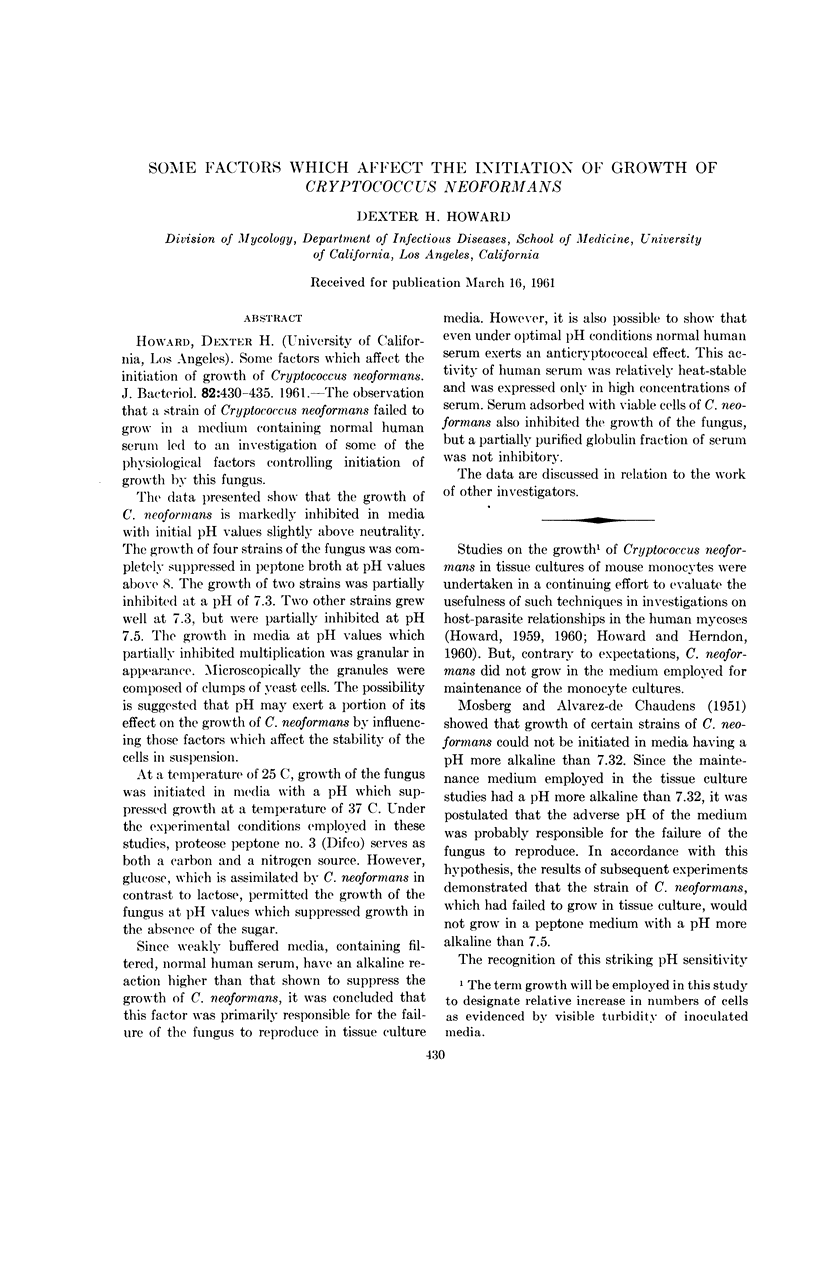
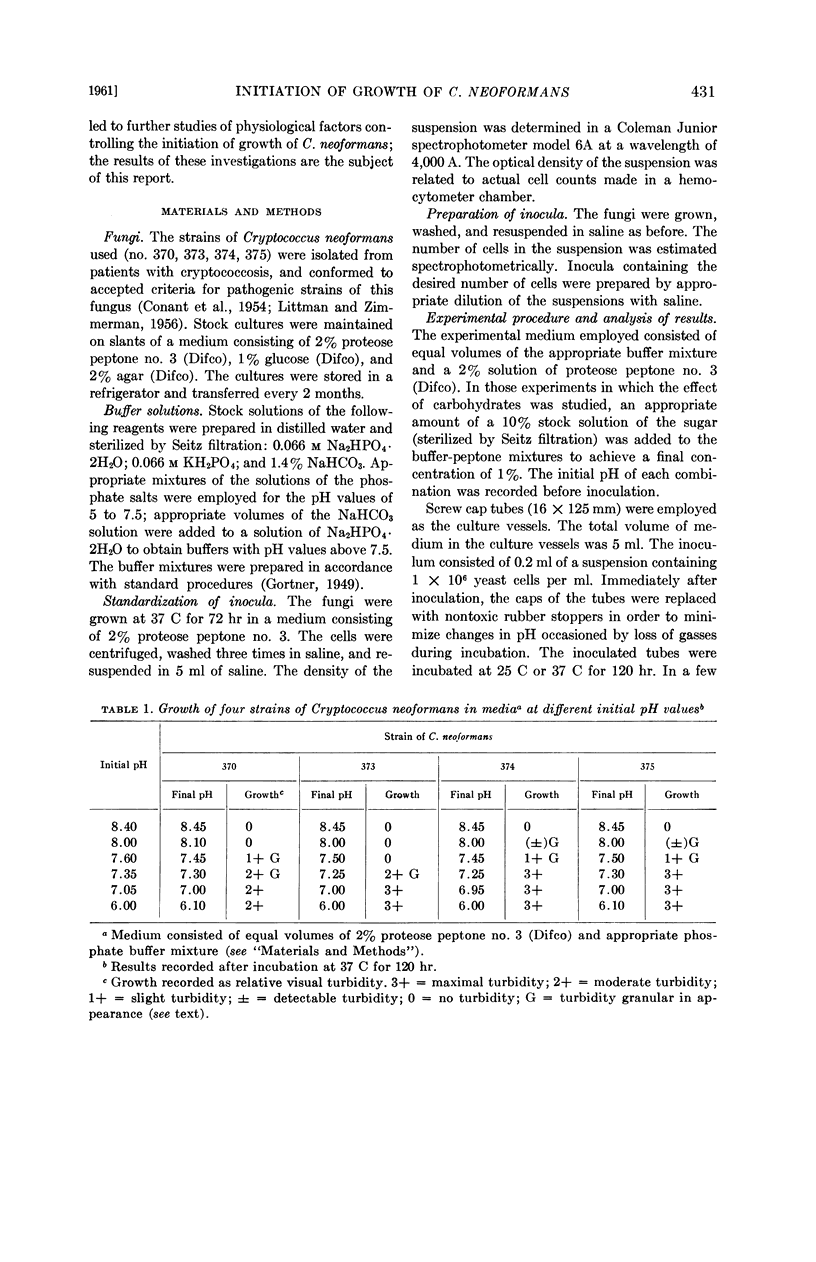
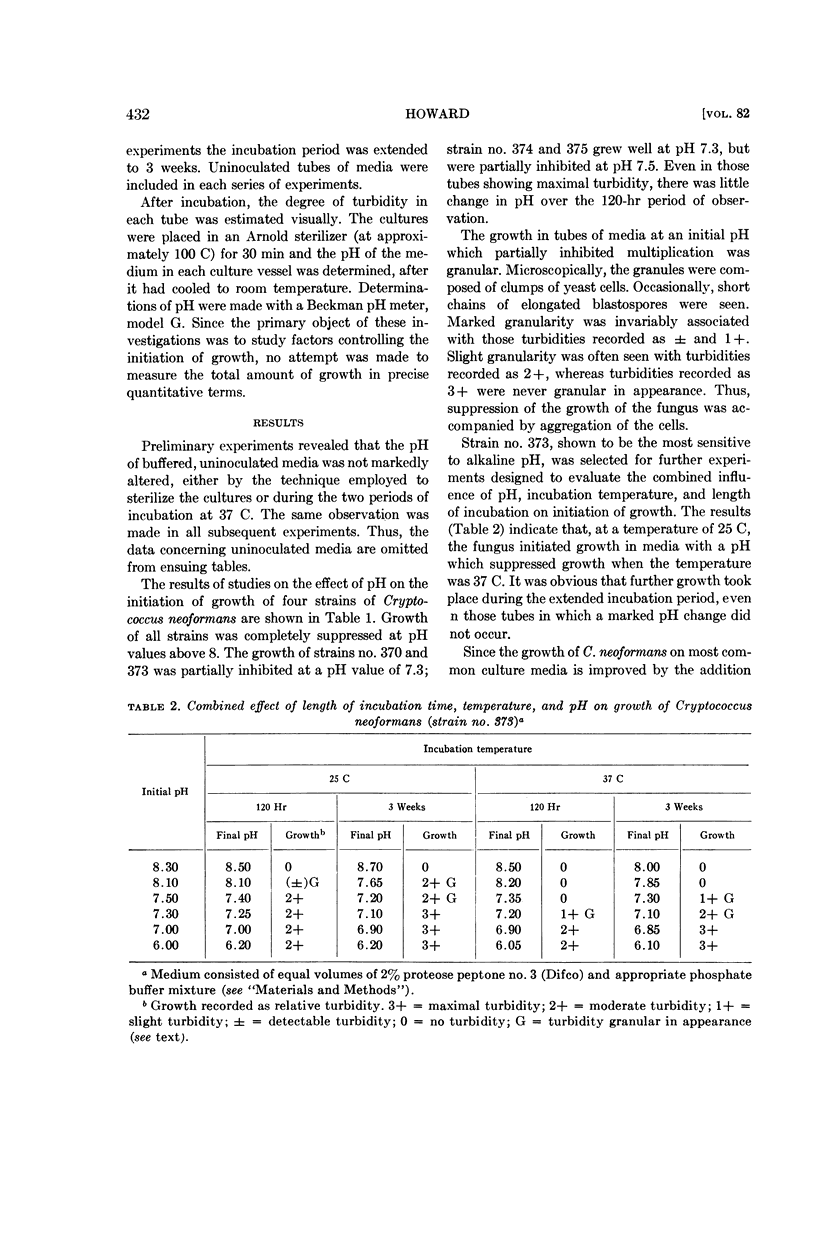

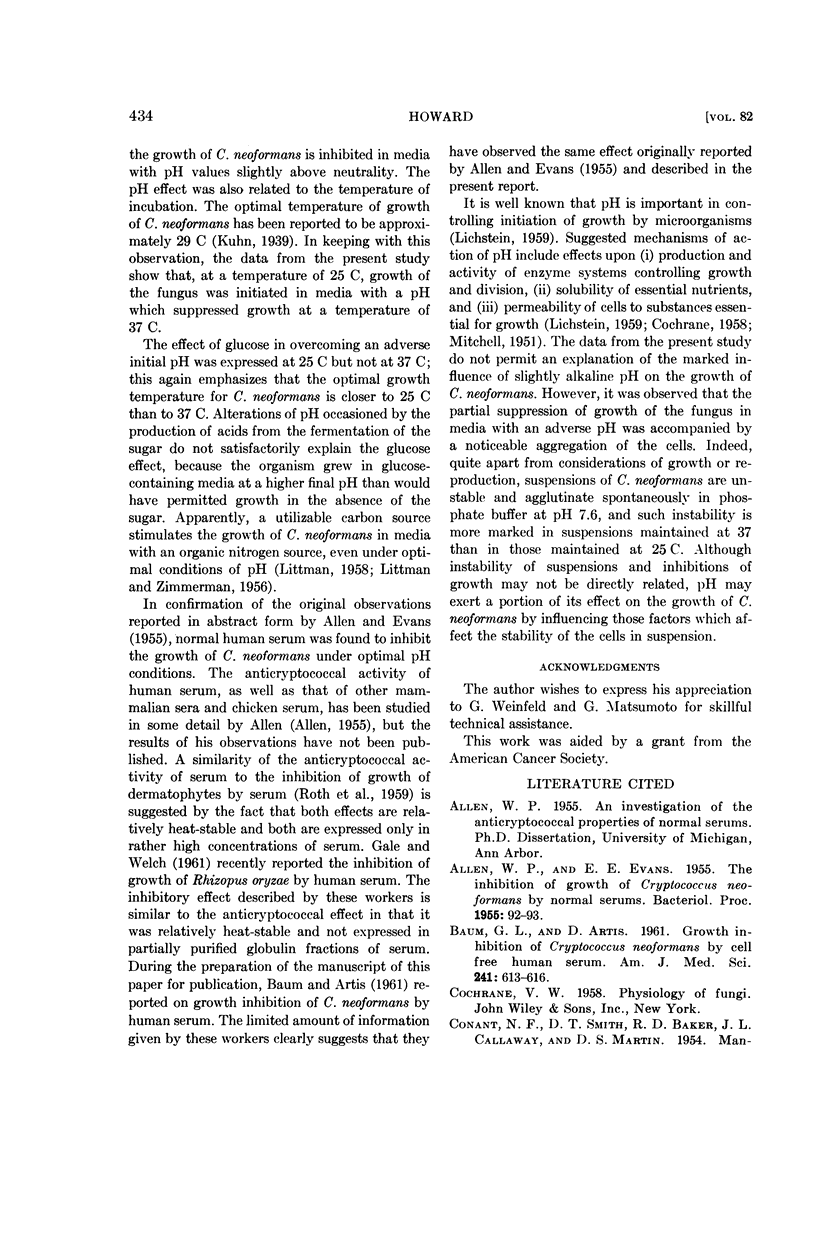
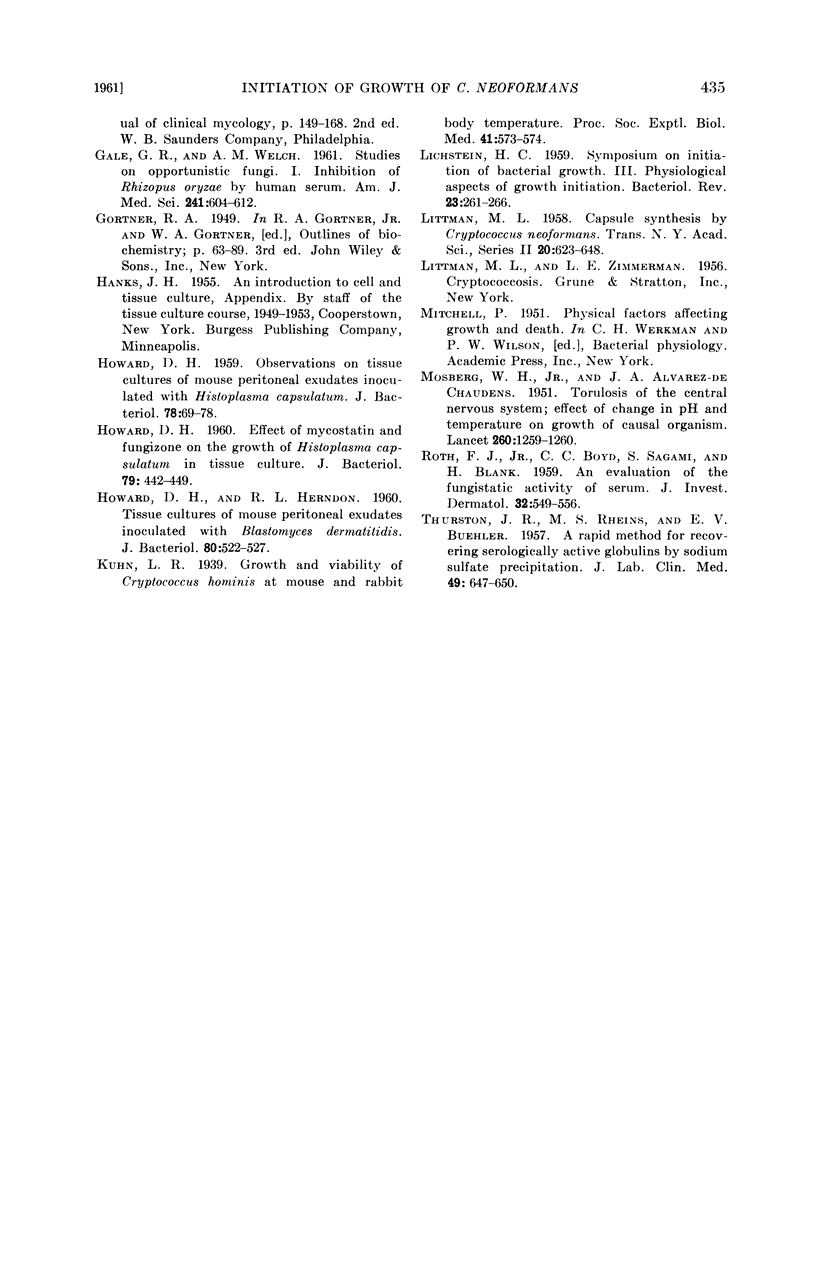
Selected References
These references are in PubMed. This may not be the complete list of references from this article.
- BAUM G. L., ARTIS D. Growth inhibition of Cryptococcus neoformans by cell free human serum. Am J Med Sci. 1961 May;241:613–616. doi: 10.1097/00000441-196105000-00009. [DOI] [PubMed] [Google Scholar]
- GALE G. R., WELCH A. M. Studies of opportunistic fungi. I. Inhibition of Rhizopus oryzae by human serum. Am J Med Sci. 1961 May;241:604–612. [PubMed] [Google Scholar]
- HOWARD D. H. Effect of mycostatin and fungizone on the growth of Histoplasma capsulatum in tissue culture. J Bacteriol. 1960 Mar;79:442–449. doi: 10.1128/jb.79.3.442-449.1960. [DOI] [PMC free article] [PubMed] [Google Scholar]
- HOWARD D. H., HERNDON R. L. Tissue cultures of mouse peritoneal exudates inoculated with Blastomyces dermatitidis. J Bacteriol. 1960 Oct;80:522–527. doi: 10.1128/jb.80.4.522-527.1960. [DOI] [PMC free article] [PubMed] [Google Scholar]
- HOWARD D. H. Observations on tissue cultures of mouse peritoneal exudates inoculated with Histoplasma capsulatum. J Bacteriol. 1959 Jul;78(1):69–78. doi: 10.1128/jb.78.1.69-78.1959. [DOI] [PMC free article] [PubMed] [Google Scholar]
- LITTMAN M. L. Capsule synthesis by Cryptococcus neoformans. Trans N Y Acad Sci. 1958 May;20(7):623–648. doi: 10.1111/j.2164-0947.1958.tb00625.x. [DOI] [PubMed] [Google Scholar]
- Lichstein H. C. III. : Physiological Aspects of Growth Initiation. Bacteriol Rev. 1959 Dec;23(4):261–266. doi: 10.1128/br.23.4.261-266.1959. [DOI] [PMC free article] [PubMed] [Google Scholar]
- MOSBERG W. H., ALVAREZ-DeCHOUDENS J. A. Torulosis of the central nervous system. Effect of changes in pH and temperature on growth of the causal organism. Lancet. 1951 Jun 9;1(6667):1259–1260. doi: 10.1016/s0140-6736(51)92758-4. [DOI] [PubMed] [Google Scholar]
- ROTH F. J., Jr, BOYD C. C., SAGAMI S., BLANK H. An evaluation of the fungistatic activity of serum. J Invest Dermatol. 1959 May;32(5):549–556. doi: 10.1038/jid.1959.92. [DOI] [PubMed] [Google Scholar]
- THURSTON J. R., RHEINS M. S., BUEHLER E. V. A rapid method for recovering serologically active globulins by sodium sulfate precipitation. J Lab Clin Med. 1957 Apr;49(4):647–650. [PubMed] [Google Scholar]


